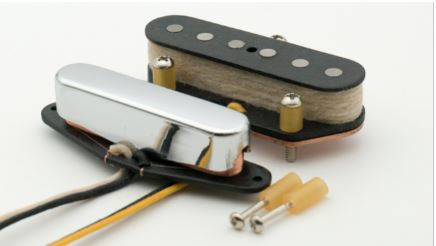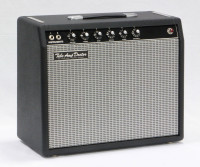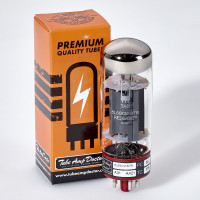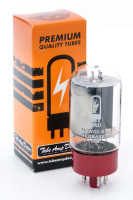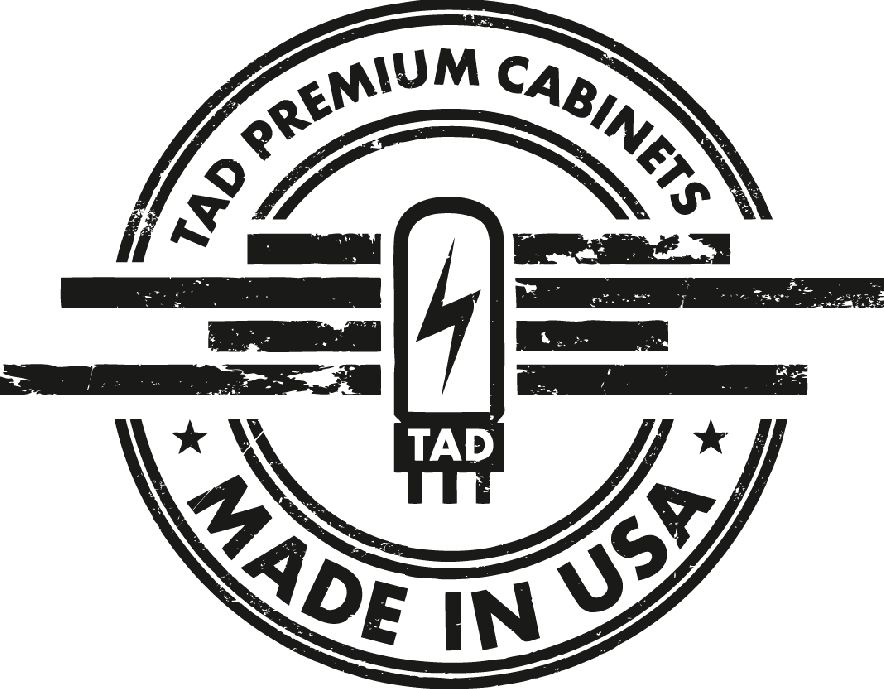*Prices incl. VAT plus shipping costs
In Stock, delivery time approx.1-4 working days (Within Germany)
The delivery times for shipping abroad can be found here.
- Part Number: AP-TWTO50-B-NC
- Packaging Size: 11x4.5x14.5 cm
- Packaging Weight: 0.1 kg
- UPC: 4251594922971
-

| Pickup Type: | Guitar Pickups |
| Pickup Magnet: | Alnico 5 |
Über die Verwendung von AlNiCo-Magneten in historischen P-90 und Humbucker Pickups existieren viele Mythen und Geschichten, die hier und da zu Fehlinterpretationen geführt haben. Deshalb möchte ich an dieser Stelle ein paar Erkenntnisse veröffentlichen, die im Laufe der vergangenen Jahre erarbeitet und gesammelt wurden und die hoffentlich dazu beitragen werden, die Verwendung dieser Magnete in den historischen Humbucker- und P-90 Pickups klarer zu sehen und besser einordnen zu können.
Zunächst ein paar technische Daten:
Die Magnete, um die es geht, sind sogenannte Blockmagnete, so wie sie seit 1946 für das P-90 Modell und später, seit ca. 1956/1957, auch für den Humbucker eingesetzt wurden. Sowohl für den P-90 als auch für den Humbucker benutzte Gibson nämlich den gleichen Blockmagnet. Dieser bestand aus einer Aluminium-Nickel-Kobalt-Eisen-Legierung, dem sogenannten AlNiCo, und hatte die Abmessungen 2 1/2“ x 1/2“ x 1/8“. Das sind in Millimeter umgerechnet 63,5 x 12,7 x 3,175 mm. Ab Mitte 1961 wurden dann Magnete verwendet, die mit 59 mm etwas kürzer waren als die älteren Magnete aus den 50er Jahren.
Der in München lebende Physiker und Gitarrist Roland Kastl hatte mich schon vor einigen Jahren darüber informiert, dass er umfangreiche Untersuchungen an einer größeren Zahl von datierten Gibson Magneten aus den 50er und 60er Jahren durchgeführt hat. Die Datierungen ergaben sich aus den Baujahren der Gitarren, die zufällig ausgewählt waren. D.h. es wurden nicht nur die Magnete eines Instrumenten Typs untersucht, sondern Magnete von unterschiedlichen Gitarrenmodellen.
Die längeren Blockmagnete, die Roland Kastl untersuchte, stammten aus P-90 Pickups und PAFs und umfassten die Jahre 1956 bis 1960. Dieses Zeitfenster konnte ich durch eigene Messungen noch erweitern, so dass die untersuchten Magnete den Zeitraum zwischen 1952 und 1960 abdecken. Betrachtet wurden magnetische Eigenschaften sowie messbare Auswirkungen auf die elektrischen Pickup-Parameter im Vergleich mit Referenzmustern heutiger AlNiCo-Typen der Legierungen AlNiCo II, III, IV und V.
Bei den älteren, langen Magneten war das Ergebnis in zweifacher Hinsicht verblüffend: Zum Einen verhielten sich sämtliche Originalmagnete untereinander gleich, zum Anderen gab es keine Übereinstimmung mit AlNiCo II, III oder V, wohl aber eine deutliche Ähnlichkeit zu den heutigen AlNiCo IV Mustern.
Auch die umfangreichen Klangtests, die ich mit meiner Pickup-Testgitarre durchführte, deuteten in die gleiche Richtung wie Roland Kastls Messungen: Bei den A:B Vergleichen konnten die alten Magnete weder einer AlNiCo II noch einer AlNiCo V Vergleichsgruppe zugeordnet werden. Obwohl mir natürlich klar ist, dass Klangtests – eigentlich das wichtigste Kriterium - immer sehr subjektiv und momentabhängig sind und nicht als objektives Kriterium bestehen können.
Alle Untersuchungsergebnisse passten nicht so recht zu der gängigen Meinung, Gibson habe in dem untersuchten Zeitraum in der Regel AlNiCo V Magnete verbaut, aber auch andere AlNiCo-Legierungen, wie z.B. AlNiCo II und III, wenn AlNiCo V gerade nicht verfügbar war. Diese Aussage hat Gewicht, denn kein geringerer als Seth Lover, der in den 50er Jahren als Ingenieur für Gibson arbeitete und den Humbucker entwickelte, hat in einem Interview über diese angebliche Einkaufspolitik von Gibson berichtet. (Quelle: „The Gibson“, International Music Publications, Oct. 1996, S. 50)
Es lag nahe, eine von Messungen und Klangtests gestützte, aber von der gängigen Meinung abweichende These zu formulieren, dass Gibson in den Jahren zwischen 1952 und 1960 mindestens überwiegend, wenn nicht ausschließlich eine AlNiCo IV Legierung für die P-90 und Humbucker Magnete verwendet hat und diese These durch weiterführende Untersuchungen überprüfen zu lassen.
Es folgten verschiedene Materialanalyse-Laboruntersuchungen (Permagraph, Funkenerosionsspektroskopie, Massenspektroskopie, Röntgenfluoreszenzanalyse), durch die Roland Kastls Einschätzung bestätigt und die genauen chemischen Zusammensetzungen der Magnete bestimmt werden konnten. Und tatsächlich handelte es sich bei allen langen Magneten aus dem untersuchten Zeitraum ausnahmslos um eine heute nicht mehr produzierte Variante von AlNiCo IV.
Auch bei den kürzeren Magneten aus den frühen 60er Jahren wurde anfangs noch diese spezielle AlNiCo IV Legierung festgestellt. Allerdings taucht jetzt auch AlNiCo II auf. In den darauf folgenden 60er Jahren wurde neben AlNiCo II zunehmend auch AlNiCo V nachgewiesen.
AlNiCo III, aus scheinbar historischer Bedeutung in den letzten Jahren in Mode gekommen, konnte weder bei den älteren Magneten der 50er Jahre noch bei den kürzeren Magneten der 60er Jahre nachgewiesen werden. Übrigens: AlNiCo III ist gar keine echte AlNiCo- sondern eine AlNi-Legierung, denn sie kommt ganz ohne Kobalt aus und ist nicht nur schwächer als die AlNiCo-Legierungen IV und V, sondern auch schwächer als AlNiCo II.
In Zusammenarbeit mit der Entwicklungsabteilung eines namhaften Magnetherstellers mündeten die Ergebnisse der Laboranalysen und die Messungen von Roland Kastl - nach einigen Optimierungszyklen und spezieller Wärmebehandlung bei der Magnetherstellung - in der „alten“ original AlNiCo IV Legierung, genau so, wie sie in den 50er und Anfang der 60er Jahre von Gibson für ihre P-90 und Humbucker Modelle verwendet wurde.
Diese speziellen AlNiCo IV Magnete kommen heute exklusiv in ausgewählten Amber Humbuckern und P-90 Pickups zum Einsatz.
Nachsatz:
Neben den umfangreichen Analysen gibt es noch andere Hinweise darauf, dass Gibson in der Zeit von Mitte bis zum Ende der 50er Jahre und auch in den frühen 60er Jahren überwiegend, wenn nicht ausschließlich AlNiCo IV Magnete verwendet hat. Tom Holmes erzählt in einem Interview mit dem Magazin ToneQuest Report, dass er beim Magnethersteller Thomas & Skinner alte Gibson Einkaufslisten aus den 50er Jahren einsehen konnte, die belegen, dass Gibson damals AlNiCo IV Blockmagnete bestellt hat.
Auch A.R. Duchossoir schreibt bereits 1981 in seinem Buch „Gibson Electrics“ über die Einführung des P-90 Pickups im Jahr 1946: „This new pick-up had two flat rectangular Alnico (II or IV) type magnets…“ Diese Information ist besonders interessant, weil Duchoisser Zugang zu Material-Listen hatte und viele Interviews mit Gibson Mitarbeitern führen konnte – und das zu einer Zeit (Ende der 70er Jahre) als noch viele Zeitzeugen und Archivmaterial zur Verfügung standen.
Auch die Aussage von Seth Lover, Gibson habe in erster Linie AlNiCo V Magnete verwendet, aber auch andere Legierungen, wenn AlNiCo V nicht zur Verfügung stand, lässt sich vielleicht verstehen und besser einordnen, wenn man den historischen Kontext betrachtet. Seth Lover hat Gibson im Jahr 1967 verlassen und es wäre nahe liegend, wenn sich seine Aussage auf seine letzten Jahre als Gibson Mitarbeiter bezieht, denn für die Mitte der 60er Jahre sind die Legierungen AlNiCo II und V belegt – so würde die Aussage von Seth Lover Sinn ergeben.
Übrigens: Wir werden als nächstes den Zeitraum vor 1952 untersuchen, denn wir halten es für möglich, dass die P-90 Magnete der frühen Jahre (1946 – 1951) zunächst aus einer AlNiCo II Legierung bestanden, bevor auf AlNiCo IV gewechselt wurde.
Klangeigenschaften:
Ein mit AlNiCo IV bestückter Pickup klingt voll, hat einen leicht nasalen Charakter und besitzt kräftige Höhen, die nie hart oder aufdringlich sind. AlNiCo IV ist definierter als AlNiCo V und dynamischer als AlNiCo II.
Der AlNiCo II bestückte Pickup ist ausgeglichen, etwas nasal, mit klaren, aber nicht aggressiven Höhen, dynamisch etwas träger als AlNiCo IV oder AlNiCo V.
Wenn bei AlNiCo V das volle magnetische Potenzial ausgeschöpft wird, klingt ein Pickup mit dieser Bestückung laut, wenig nasal und hart in den Höhen. Vorteil: dynamisch im Overdrive Modus. Man kann den Charakter des AlNiCo V Magneten durch gezielte Manipulation so trimmen, dass der Klang des so bestückten Pickups „akustischer“ wird, seine Aggressivität verliert und in die Richtung der AlNiCo IV Klangeigenschaften geht.
Autor: Wolfgang Damm, 2018







